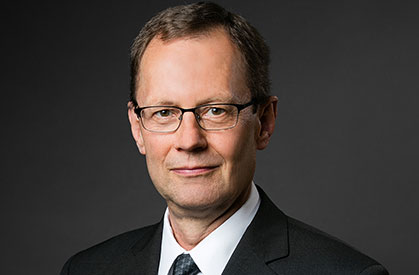Thoughts about Physician Assisted Death
January 14, 2016

Dear Member:
I am writing today about Physician Assisted Death (PAD). The subject came up at the recent special meeting of the Representative Forum (RF) in December 2015 and is of great concern to members of the Alberta Medical Association (AMA).
Because it involves federal legislation, PAD is a national issue. The Canadian Medical Association (CMA) has taken the lead for the provincial and territorial medical associations; the CMA framework can be reviewed in the November-December 2015 issue of Alberta Doctors’ Digest, which was a special issue devoted to PAD. A provincial/territorial expert advisory group also issued a report on the subject in November 2015.
Provincially, the respective regulatory bodies/colleges are implementing their own standards of practice for participation in PAD. The College of Physicians & Surgeons of Alberta (CPSA) has:
- Issued an “Advice to the Profession” document.
- Initiated a consultation process on two relevant standards of practice:
I understand that there are deep divisions in the profession regarding PAD. Nonetheless, the reality of PAD will soon be with us, whether or not the Supreme Court of Canada (SCC) grants the federal government’s request for a six-month extension for the stay of implementation of relevant legislation.
Individual choice, professional responsibilities and related issues
Regardless of our personal opinions, providing access to a legal medical service is a professional responsibility for physicians. As I understand it, we are the only group for which the SCC decision provides protection against criminal code provisions if assisting a patient to die.
The responsibility to provide the service to patients who legitimately request PAD must be balanced by respect for the autonomy of individual physicians who receive these requests. This is, I think, one point of consensus in the profession around PAD.
There is also agreement on the need for comprehensive palliative care for all Canadians! The number of patients requesting PAD could vary if they are confident that their final days can be met with dignity, comfort and compassionate support.
There are other essential considerations in PAD including such things as:
- The aforementioned comprehensive palliative care.
- Determining candidacy for PAD.
- Competence assessment.
- Timelines and procedures.
- Registration of cause of death.
- Developing a system of providers.
- Determining the role of allied health care workers.
- Support for:
- Patients requesting PAD whose doctor chooses not to refer.
- Physicians who choose to refer or not.
- Involved allied health care workers.
All these considerations are important, and related decisions must be compliant with the law and reflect the compassion of our profession.
It has been suggested that emancipated minors may have the right to PAD. This may be an interpretation based on the simple inclusion of PAD with other adult rights accorded these individuals. Possibly, however, PAD may not be the same thing as the right to, say, sign a lease or to have an appendectomy.
PAD is new to Canadian society and law, and the answers to some of these questions will likely await the evolution of further explanation by the SCC, college regulations, Canadian Medical Protective Association advice and case law. I have also heard some commentary suggesting that we may see challenges from groups currently excluded from PAD: those with a desire for PAD expressed in advanced directives, and children.
It is critical to respect the autonomy of physicians to participate or not. There are strong opinions about what constitutes “participation” among those doctors willing to provide the service, and those who are unwilling. The language used in law and in college standards will reflect whether we have succeeded in finding the balance point between provision of service and protection of conscience.
In polling conducted by the CMA in 2015, 29% of Canadian physicians said they would participate in PAD. Depending on organizational structure, it is hoped that this level of voluntary participation would meet the need, avoiding the possibility of overriding the autonomy of non-participating physicians. Geographic distribution will likely be a concern, particularly in smaller communities with few physicians. A well-organized system should overcome this.
What is the AMA doing? At the December 2015 meeting of the Board of Directors, the board expressed its support for the CMA policy on Euthanasia and Assisted Death. In my reading of the policy, I see the right balance between provision of service and protection of autonomy. It states that:
“A physician should not be compelled to participate in medical aid in dying should it become legalized. However, there should be no undue delay in the provision of end of life care, including medical aid in dying.”
The board will also discuss PAD, including the “Advice to the Profession” from the college, at our next meeting in February. As directed by the RF, I will write to the CPSA following that meeting, reflecting your input and the board’s direction. I will also write to you again. In the meantime, please consider doing the following:
- Review relevant materials at the document links above.
- Provide feedback to the CPSA regarding the two relevant standards of practice.
- Ponder your own feelings on this matter.
- Discuss this with colleagues in your group and community.
The legalization of PAD is a significant societal change. Physicians have a unique role in PAD. We must respond, as we always have, with understanding, leadership, and above all else, compassion. That is my request of you.
Please let me know what you think. Email president@albertadoctors.org or leave a comment below.
Kind regards,
Carl W. Nohr, MDCM, PhD, FRCSC, FACS
President

2 comments
Commenting on this page is closed.
This comment has been deleted.
This comment has been deleted.